Let’s step back in time and immerse ourselves in the wonder and beauty of Italy's Renaissance, a treasure trove of cultural and historical riches that continues to captivate visitors from around the world. From the 14th to the 17th centuries, this transformative period saw an explosion of creativity, innovation, and artistic expression that still resonates today.
From the masterpieces of Leonardo da Vinci and Michelangelo to the architectural marvels of Florence and the Vatican City, Italy's Renaissance is a must-see destination for anyone interested in history, culture, and art.
Join us as we explore the beauty and richness of Italy's Renaissance in a journey that will take us through the heart of this remarkable period and leave us spellbound by its enduring legacy!
What was the Renaissance?
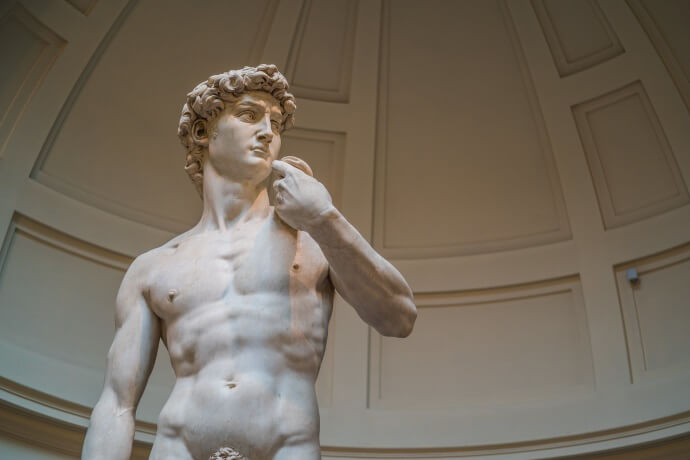
The term "Renaissance" comes from the French word for "rebirth", and it refers to a renewed interest in classical ancient Greece and Rome arts and philosophy during a period between the 14th and 17th centuries. It began in Tuscany, in Italy, and then spread throughout Europe.
It was a period of great social and political change and the emergence of a middle class that was able to support the arts and education. The printing press was also invented during this time, which helped to spread knowledge and ideas throughout Europe. Artists began to explore new techniques and perspectives, creating some of the most iconic works of art in history, such as Leonardo da Vinci's “Mona Lisa” and Michelangelo's “David”.
Overall, the Renaissance was a period of profound cultural, artistic, and intellectual transformation that had a lasting impact on European history and beyond.
Milan
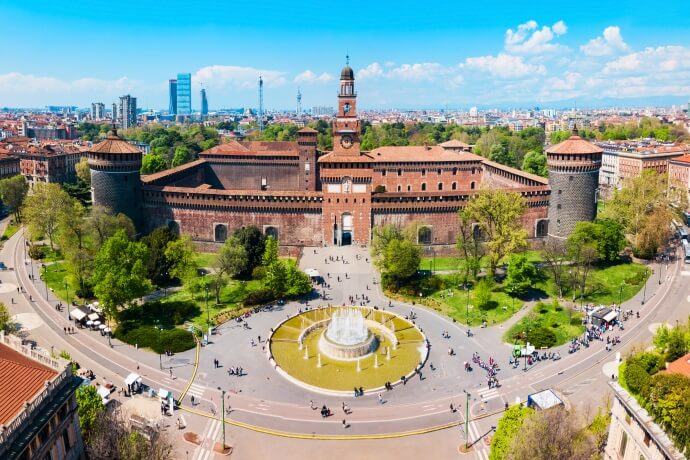
It was the powerful Sforza family who transformed Milan into a beacon of economic and cultural greatness. Their patronage attracted the likes of Leonardo da Vinci and Bramante, who helped to create some of the most striking and innovative architectural wonders of the time.
One of the shining jewels of Milan's Renaissance heritage is the Castello Sforzesco, a monumental fortress that boasts breathtaking courtyards adorned with frescoes and sculptures by some of the greatest Renaissance masters, including the legendary Leonardo da Vinci.
Another must-see masterpiece of Milan's Renaissance is the awe-inspiring Milan Cathedral, also known as the Duomo di Milano, which has dominated the city's skyline for centuries. Although it is not technically a Renaissance building, this Gothic treasure was built over centuries, and some elements of the Renaissance period can be found in its design, including the ornate façade that was reimagined in the 16th century to reflect the Renaissance focus on symmetry and classical motifs.
But the true crown jewel of Milan's Renaissance is undoubtedly Leonardo da Vinci's “Last Supper”, a masterpiece of epic proportions that has captured the hearts and imaginations of art lovers for centuries. Located in the UNESCO World Heritage site of the Church of Santa Maria delle Grazie, this iconic painting is a triumph of composition, perspective, and emotion, and it is a must-see for anyone who appreciates the finer things in life.
If you want to admire the incredible work of art “The Last Supper”, you must book a timed ticket in advance, as its delicate state requires careful conservation. But it is well worth the effort, as the painting's stunning size, lifelike figures, and evocative color palette make it an unforgettable experience.
Verona
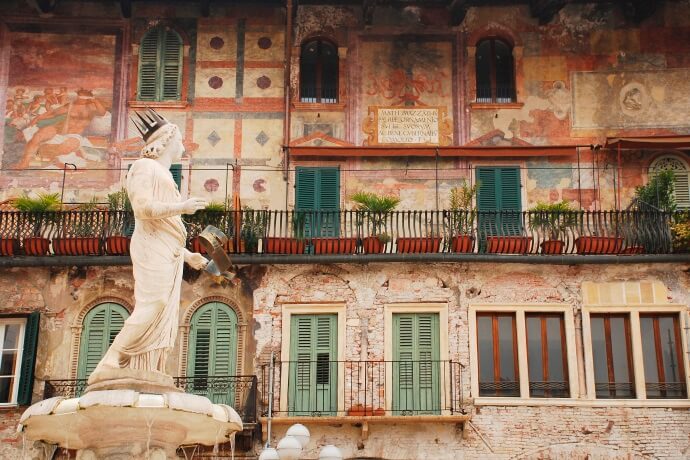
Verona, the city where Romeo and Juliet's love story began, may be less well-known than some of its more famous neighbors when it comes to the Renaissance era, but it is a hidden gem with a rich and fascinating heritage waiting to be discovered. During this period, Verona was ruled by the Republic of Venice and was a prosperous city-state. As a result, the Renaissance style flourished, giving rise to beautiful public buildings like the City Council Loggia, which was one of the earlier Renaissance buildings in the Veneto region.
Verona's many churches were also restored and renovated in the new style, and famous artists such as Pisanello and Mantegna left some of their most important masterpieces in the city.
As Venice's strategic stronghold, Verona's importance continued throughout the Renaissance period, and new monumental fortifications were raised around the city. The project was entrusted to Michele Sanmicheli, one of Italy's most important Renaissance architects, who also designed gorgeous palaces and churches in the city such as Palazzo Pompei, Palazzo Bevilacqua, the church of St George, and Santa Maria in Organo, among others. With its rich history and Renaissance heritage, Verona is a true jewel waiting to be discovered.
Mantua
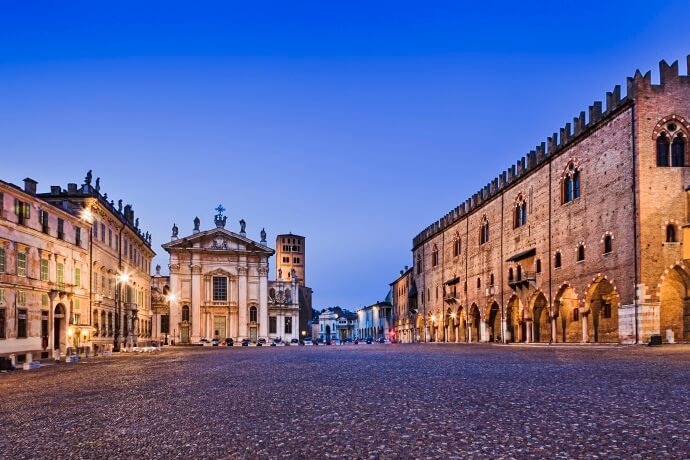
Mantua is a true hidden gem in the Lombardy region, exuding a timeless beauty and charm that has enchanted visitors for centuries. Designated as a UNESCO World Heritage site in 2008, the city is celebrated for its stunning urban, architectural, and artistic Renaissance achievements.
Under the patronage of the powerful Gonzaga family, Mantua was transformed during the 15th and 16th centuries by renowned architects such as Leon Battista Alberti and Giulio Romano, and master painters like Andrea Mantegna. The result was a breathtaking fusion of art, architecture, and culture that remains unparalleled to this day.
At the heart of Mantua lies the Complesso Museale Palazzo Ducale, an awe-inspiring testimony to the grandeur of the Italian Renaissance. Spread over a vast expanse of 35,000 square meters with more than 1,000 rooms, this magnificent "city palace" boasts a treasure trove of art and architecture that is simply magnificent. The late-Gothic frescoes by Pisanello and the Camera Picta by Andrea Mantegna are just a few of the priceless masterpieces that adorn its walls.
Ferrara

Widely regarded as one of the most culturally significant cities of Renaissance Italy, Ferrara is renowned for its notable contributions to literature, politics, and the arts. The city's illustrious history is closely tied to the Este family, who ruled over Ferrara from the 14th to the 16th century. Their patronage of the arts attracted some of the most celebrated artists of their time, including Piero della Francesca, Mantegna, and Michelangelo.
One of Ferrara's most notable features is its remarkable urban design, which was created by Biagio Rossetti in 1492. This intricate and unique blend of late medieval and Renaissance architectural styles was the first of its kind, marking the birth of modern town planning and revolutionizing urban development, solidifying its place as a groundbreaking city of the Renaissance recognized as a UNESCO World Heritage site.
At the heart of Ferrara stands the majestic medieval Estense Castle, a formidable fortress that has stood the test of time. Yet, the crown jewel of Ferrara's Renaissance heritage is the Palazzo Schifanoia, the former residence of the wealthy Este family. The palace is filled with an impressive array of opulent paintings, frescoes, and sculptures, serving as a testament to the Este family's unwavering commitment to culture and the arts.
Siena
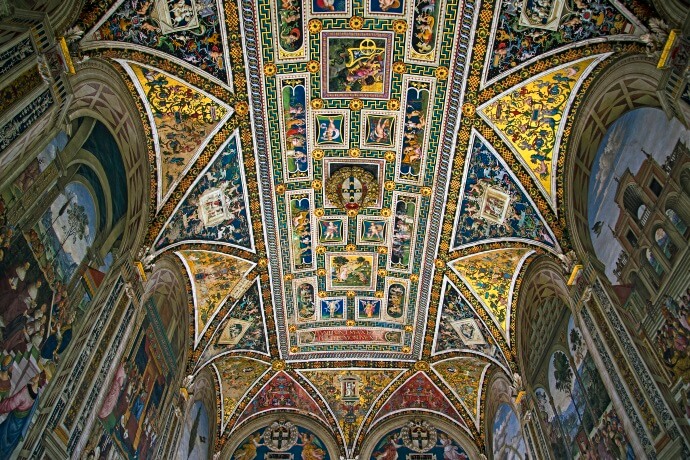
Nestled in the hills of Tuscany lies the breathtaking medieval city of Siena. During the Renaissance period, it was a significant cultural and economic hub, alongside Florence. Yet, the two cities shared a fierce rivalry. While Florence took the spotlight as the dominant city of the Renaissance, Siena proudly maintained its own unique cultural identity and artistic traditions.
In the heart of the city, stands the Palazzo Pubblico, a magnificent palace with awe-inspiring Gothic architecture and a remarkable collection of Renaissance art. The palace's crowning glory is the fresco cycle by Ambrogio Lorenzetti, illustrating the Allegory of Good and Bad Government.
Once a hospital and orphanage, the Santa Maria della Scala was transformed into a cultural center and museum. It boasts several Renaissance works of art, including frescoes by Domenico di Bartolo and a cycle of paintings by Ambrogio Lorenzetti.
The Siena Cathedral, or the Duomo di Siena, is an exquisite medieval church adorned with a range of Renaissance artworks, including sculptures by Donatello and Michelangelo. The Piccolomini Library, within the cathedral, is adorned with a splendid fresco cycle by Pinturicchio.
Arezzo
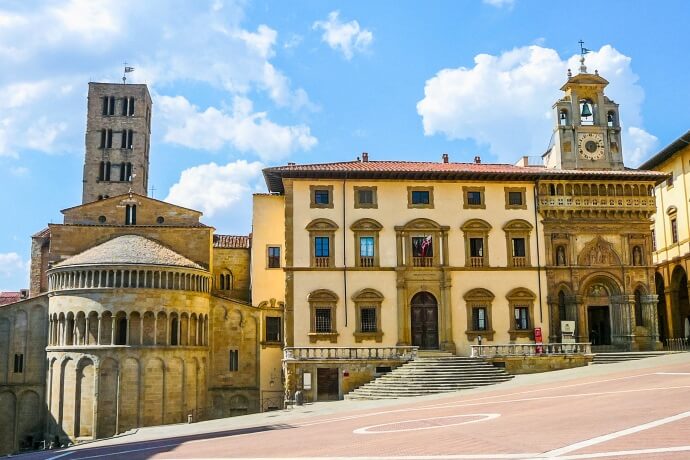
Amidst the picturesque Chianti Valley lies Arezzo, a city that played a crucial role in the Renaissance era as a center of art, culture, and commerce. The city drew in numerous notable artists, writers, and intellectuals of the time, including the renowned poet Petrarch and the masterful painter Piero della Francesca. The magnificent Cattedrale di San Donato, the city's Cathedral, houses some of the most important Renaissance artworks, including exquisite frescoes by Piero della Francesca and a dazzling stained-glass window by Guillaume de Marcillat.
Apart from the Cathedral, Arezzo boasts several other remarkable landmarks from the Renaissance period, such as the Churches of San Francesco and Santa Maria della Pieve, both of which are adorned with stunning cycles of frescoes.
Moreover, Arezzo is the birthplace of the celebrated Renaissance artist, Giorgio Vasari, a favorite of the illustrious Medici family. His former residence now stands as a museum, and the true highlight of the museum is the exceptional frescoes painted by Vasari on the walls and ceilings of the building, which still exude their vibrant glory.
Florence

Also known as the "Cradle of the Renaissance", Florence played a pivotal role in the development of Europe's great cultural and artistic achievements from the 14th to the 17th centuries. During this period the city flourished as one of the wealthiest and most powerful cities in Italy, and its affluent and influential citizens became significant patrons of the arts. It is no wonder that some of the most celebrated artists of the Renaissance, such as Leonardo da Vinci, Michelangelo, and Botticelli, lived and worked here.
The city's architecture and urban design were key factors in the Renaissance, with notable buildings constructed during this period, reflecting the new ideas and styles that emerged. The Cathedral of Santa Maria del Fiore, or Duomo, is a striking building that has become an iconic symbol of Florence. It was designed in the 13th century and completed in the 15th century. The magnificent dome, an addition by Filippo Brunelleschi, is regarded as one of the most impressive engineering feats from the Renaissance era.
The Basilica di San Lorenzo, commissioned by the Medici family in the 15th century, is home to several significant works of art by Michelangelo and Donatello, as well as the stunning Medici Chapels, considered among the most beautiful Renaissance tombs in Italy.
To experience the rich cultural heritage of Florence, one must visit the Palazzo Vecchio and the Uffizi Gallery. Once government buildings, they are now home to important works of art, including breathtaking frescoes by Giorgio Vasari, sculptures by Michelangelo, and art collections featuring works by Botticelli, Leonardo da Vinci, and numerous other masterful artists.
Residence of the influential Medici family, the Palazzo Pitti houses several important museums, including the Palatine Gallery, featuring works by renowned artists like Raphael, Titian, and Rubens.
These are just a few of the many splendid Renaissance buildings in Florence. The city is a treasure trove of art and architecture from this period, and visitors could spend days exploring its numerous museums, churches, and palaces, soaking in the beauty and grandeur of this magnificent city.
Rome and the Vatican City
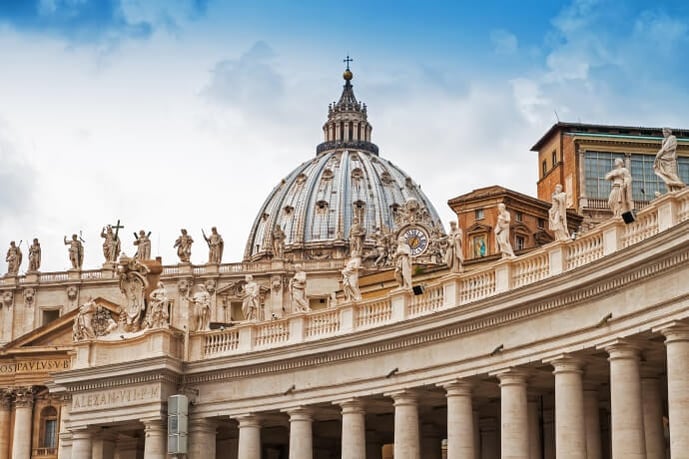
While Florence was a hub of artistic and cultural activity, Rome was more focused on religious and intellectual developments. The city's rich history and ancient ruins inspired many artists and intellectuals to explore classical themes and motifs in their work.
Rome is home to many beautiful palaces from the Renaissance style, like Palazzo Farnese, Villa Farnesina, Palazzo della Cancelleria and Palazzo Barberini. Santa Maria del Popolo Church is a beautiful Renaissance Basilica and Piazza del Campidoglio is a square beautifully designed by Michelangelo.
These are just some of the amazing Renaissance buildings in Italy’s capital, however, the Vatican City is where we can find some of the most jaw-droppingly beautiful buildings and artworks in the world. St Peter’s Square is usually regarded by tourists as the place where they have to wait in line in order to access the Basilica, but it is actually a piece of art in its own right. Designed and built by Bernini between 1656 and 1667, it is enclosed by two colonnades which create a circular space in the middle. This peculiar shape is unique and stands for the open arms of the Church embracing the world. Definitely, something to look at in detail when waiting to enter the Basilica!
Designed by Michelangelo, Bramante, and Bernini, St. Peter's Basilica is one of the most important Renaissance buildings in Rome. Its magnificent dome and grandiose design make it one of the city's most recognizable landmarks. This wonderful building was assembled over several centuries and it is one of the largest churches in the world. Inside there is a plethora of awe-inspiring pieces, such as Michelangelo’s “Pietà” and the gilded bronze baldachin designed by Bernini.
The Vatican is also home to important Renaissance heritage, such as the Sistine Chapel and the Vatican Museums, which contain some of the world's most famous artworks. The Sistine Chapel is possibly one of the most awe-inspiring masterpieces in the world. The combination of architecture and pictorial art creates a harmony that is hard to match, while Michelangelo’s incredible depiction of the nine central stories from the book of Genesis is surely one of humanity’s finest artistic achievements.
A Journey Through Time and Space
Italy has long been considered an extraordinary destination, with its breathtaking landscapes, overwhelming architecture, and welcoming spirit of the Italian people. However, for those with a passion for art, a fascination with history, or simply an appreciation for all things beautiful, exploring Italy's Renaissance heritage is an unmissable adventure. Embarking on this journey is like stepping into a time machine, transporting oneself to a world of unparalleled magnificence and incredible artistic masterpieces. Let your heart be your guide and be captivated by the splendor of Italy's Renaissance treasures.



